All issues

Predecessor
Volume 49, Issue 10
Displaying 1-7 of 7 articles from this issue
- |<
- <
- 1
- >
- >|
49th Annual Meeting of the Japanese Association of Rehabilitation Medicine Special Lecture
-
Toshiteru OKUBO2012 Volume 49 Issue 10 Pages 667-669
Published: October 18, 2012
Released on J-STAGE: October 25, 2012
JOURNAL FREE ACCESSDownload PDF (579K)
48th Annual Meeting of the Japanese Association of Rehabilitation Medicine Symposium
-
2012 Volume 49 Issue 10 Pages 670-682
Published: October 18, 2012
Released on J-STAGE: October 25, 2012
JOURNAL FREE ACCESS
Clinical Application of Brain Plasticity induced by Transcranial Magnetic Stimulation…Tatsuya MIMA, Satoko KOGANEMARU, Hidenao FUKUYAMA, Ryosuke TAKAHASHI, Kazuhisa DOMEN 670
Applying Event-related Electroencephalogram Desynchronization for Motor Learning…Junichi USHIBA 674
Using Neuronal Process Redundancy for Motor Control and Learning…Daichi NOZAKI 679View full abstractDownload PDF (1159K)
48th Annual Meeting of the Japanese Association of Rehabilitation Medicine Panel Discussion
-
2012 Volume 49 Issue 10 Pages 683-703
Published: October 18, 2012
Released on J-STAGE: October 25, 2012
JOURNAL FREE ACCESS
Mechanism of Bone Destruction in Rheumatoid Arthritis…Tomoki NAKASHIMA, Hiroshi TAKAYANAGI 683
Preventive Measures against Bone Joint Destruction in Rheumatoid Arthritis…Yuho KADONO 690
Progress in Surgical Treatment for Joint Disorders in Rheumatoid Arthritis…Toru SUGURO 694
Trends in Rehabilitation for Rheumatoid Arthritis in the Biologic Era…Akira MURASAWA, Kiyoshi NAKAZONO, Hajime ISHIKAWA, Hiroshi OTANI, Sogawa YUICHIRO 699View full abstractDownload PDF (3212K) -
2012 Volume 49 Issue 10 Pages 704-725
Published: October 18, 2012
Released on J-STAGE: October 25, 2012
JOURNAL FREE ACCESS
Brain-machine Interfaces to support Daily Activities of Persons with Disabilities…Kenji KANSAKU 704
Paretic Hand Rehabilitation in Stroke Patients using a Brain-computer Interface…Junichi USHIBA 710
A BMI Motor Control System…Yasuharu KOIKE, Toshihiro KAWASE, Duk SHIN, Hiroyuki KAMBARA, Natsue YOSHIMURA 715
Electrocorticographic Decoding of Visual Information…Isao HASEGAWA 720View full abstractDownload PDF (3201K)
Original
-
Kazue TSURUMI, Takashi ISAJI, Koichi OHNAKA2012 Volume 49 Issue 10 Pages 726-733
Published: October 18, 2012
Released on J-STAGE: October 25, 2012
JOURNAL FREE ACCESSObjective : To examine the characteristics of rehabilitation in patients with cervical spinal cord injury, we statistically analyzed the factors that affected their home discharge. Methods : We examined 122 inpatients diagnosed with cervical spinal cord injury in our hospital from January 2001 to December 2010. We categorized the patients into a home discharge group and a non-home discharge group, and ruled out inpatients that underwent rehabilitation at other hospitals after discharge. We analyzed the following factors with regard to their influence on home discharge : sex, age, length of stay, surgery after injury, cervical vertebral fracture at injury, the grade on the Frankel grading system, Functional Independence Measure (FIM) scores, movement ability, pain severity, the number of comorbidities, complications, and the number of caregivers. Results : The factors that favored home discharge included : improvement of paralysis, improvement of FIM scores, high-FIM scores at both admission and discharge, and high potential for movement at discharge. The factors that hindered home discharge included : advanced patient age, long length of stay, pain severity, and urinary infection. Multivariate analyses showed that age, pain severity, and movement ability were the most relevant factors that influenced home discharge. Conclusion : Pain control as well as improvement of movement ability are important factors affecting home discharge in rehabilitation units.View full abstractDownload PDF (507K)
Case Report
-
Atsuko SHO, Shin TAKANO2012 Volume 49 Issue 10 Pages 734-737
Published: October 18, 2012
Released on J-STAGE: October 25, 2012
JOURNAL FREE ACCESSA 43-year-old man was admitted to our hospital for rehabilitation of higher brain dysfunction caused by traumatic brain injury. He had undergone an emergency operation for acute epidural hematoma after a fall. He had impaired cognitive function with regard to memory, attention, and executive function. However, he also exhibited facial features such as frontal baldness and hatched face. Neurological examination showed mild distal muscle weakness in the extremities, gait disturbance, and grip and percussion myotonia. Needle electromyography showed myotonic discharges. Brain magnetic resonance imaging did not show any intra-axial abnormalities. Myotonic dystrophy (DM) was therefore diagnosed. Rehabilitation resulted in improved gait stability, but the patient's cognitive function did not improve. Severity of illness in DM patients varies from a floppy infant to a lack of awareness of the disease throughout one's lifetime. Therefore, DM patients might not be properly diagnosed because of the mildness of their clinical symptoms. It is important for non-neurologists to be aware of the possible occurrence of this disease.View full abstractDownload PDF (624K)
Review Article
-
Kinya HISANAGA, Nobuo TAKAHASHI2012 Volume 49 Issue 10 Pages 738-745
Published: October 18, 2012
Released on J-STAGE: October 25, 2012
JOURNAL FREE ACCESSPatients with Parkinson disease present with a variety of symptoms as well as the so-called 4 classic symptoms : tremor, muscle rigidity, akinesia, and postural instability. To treat this disease, the best combination of various antiparkinsonism drugs, deep brain stimulation, and rehabilitation should be determined and administered. Muscular training in rehabilitation for patients should place great importance on some especially vulnerable muscles including the truncal muscles, extensor muscles for hip and knee joints, and dorsiflexor muscles for ankle joints. Shifting the center of gravity and using rhythmic movements are important factors in getting the patient standing and walking. Training using visual and auditory cues and music is effective in Parkinson disease. Speech therapy using weighted noise is also available. In rehabilitation we have to pay attention to cognitive function and psychiatric symptoms in patients including depression, anhedonia, hallucination, delusion, dopamine dysregulation syndrome, and impulse control disorder. What priority should be set for rehabilitation differs according to the stages of disease. Utmost efforts must be made for patients in the advanced stage of Parkinson disease to prevent them from being bedridden, tube-fed, and demented. Medical staff must be creative in coming up with new ideas to assist such patients in sitting comfortably on chairs for long periods and in eating by mouth safely.View full abstractDownload PDF (730K)
- |<
- <
- 1
- >
- >|